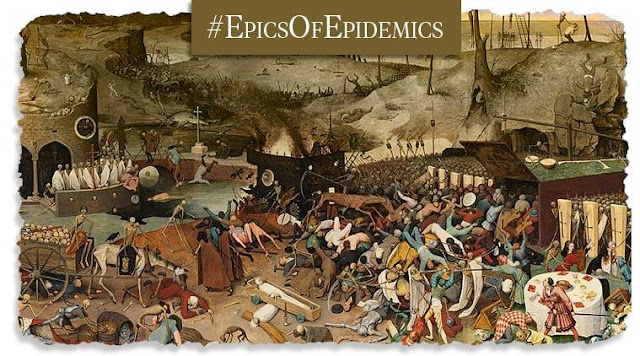 |
| Image Source-Google | Image by- | hopkinsmedicine |
SIGNS AND SYMPTOMS OF CORONARY ARTERY DISEASE
 Solution-Driven Business Analyst with experience leading cross-functional teams in the development, documentation & delivery of process innovations driving the attainment of business goals.
Solution-Driven Business Analyst with experience leading cross-functional teams in the development, documentation & delivery of process innovations driving the attainment of business goals.
BLACK DEATH
In human history, there have been number of pandemics of diseases such as small-pox; the most deadly, tragic and incurable pandemic experienced in history/ancient time, was the "Black death" (was known for plaque), which was killed 75-200 million people worldwide in 14th century. It was caused by the bacterium yersinia pesttis and may also caused by septicaemic or pneumonia plaques.
It was the origination of the second plaque pandemic. The plaque spread social, religious and economic upheavals, with increasing and expanding influence on the course of European history. This pandemic originated either in Central-Asia or East-Asia, but it's first appearance was seen in Crimea in 1347; it was most likely carried by fleas living on the black rats on Genoese slave ships spreading through Mediterranean Basin reaching Africa, Western-Asia and the rest of Europe via.
The black death was the most great natural disaster to strike Europe during the late middle ages (the first was being the Great Famine of 1315-1317) and is estimated to have killed approximately 30 percent to 60 percent of European population. The plaque also might have reduced the World's population approximately 475 million to 350-375 million in the 14th century.
Description/Explanation of Black death/Plaque :
It was identified and sanctioned that an epidemiological account of plaque is as predominant as an recognization of symptoms, but researchers are hampered by the lack of reliable statistics from the period. Archaeologist Barney Sloane argued that there is insufficient evidences and proofs of the extinction of numerous rats in the Archaeological records of the medieval waterfront in London and the disease spread too quickly to support the thesis that Y. Pestis was spread from fleas on rats; he argued that transmission must have been from person to person. This theory is reported by research in 2018 which suggested transmission was more likely by body lice and fleas during the second plaque pandemic.
SUMMARY :
With past experience & evidences, intellectual discussion and argumentation, no single evidences has achieved any solution; World-Wide accepted.
......At the end, Finally & Eventually, "Plaque is plaque." 😉 😜 😜
 Solution-Driven Business Analyst with experience leading cross-functional teams in the development, documentation & delivery of process innovations driving the attainment of business goals.
Solution-Driven Business Analyst with experience leading cross-functional teams in the development, documentation & delivery of process innovations driving the attainment of business goals.


